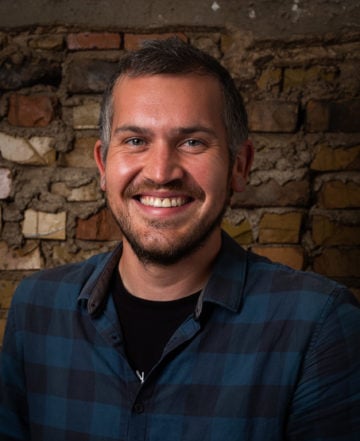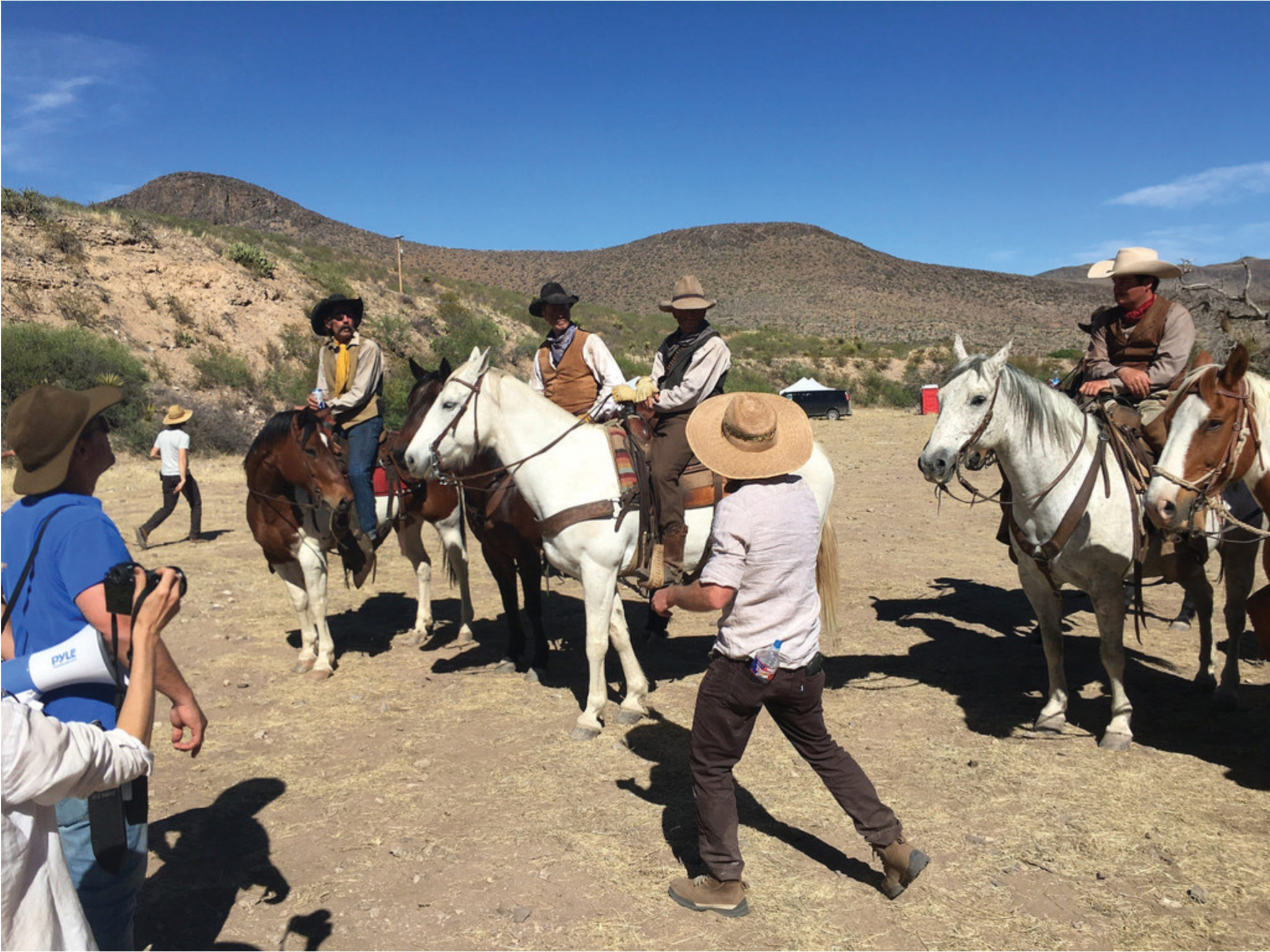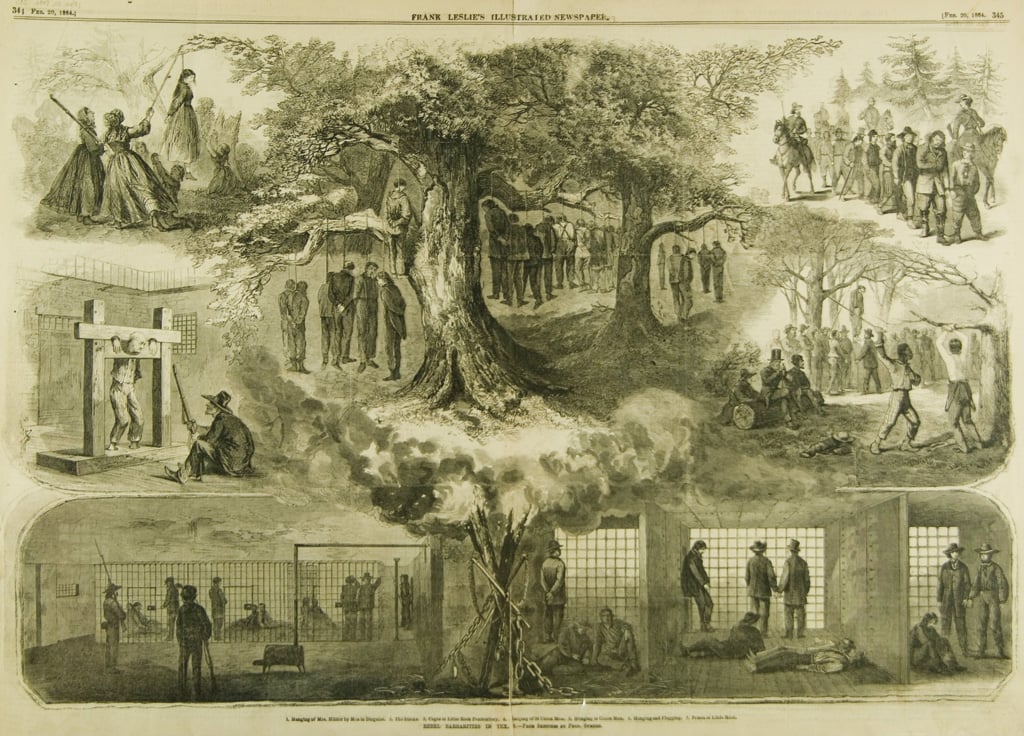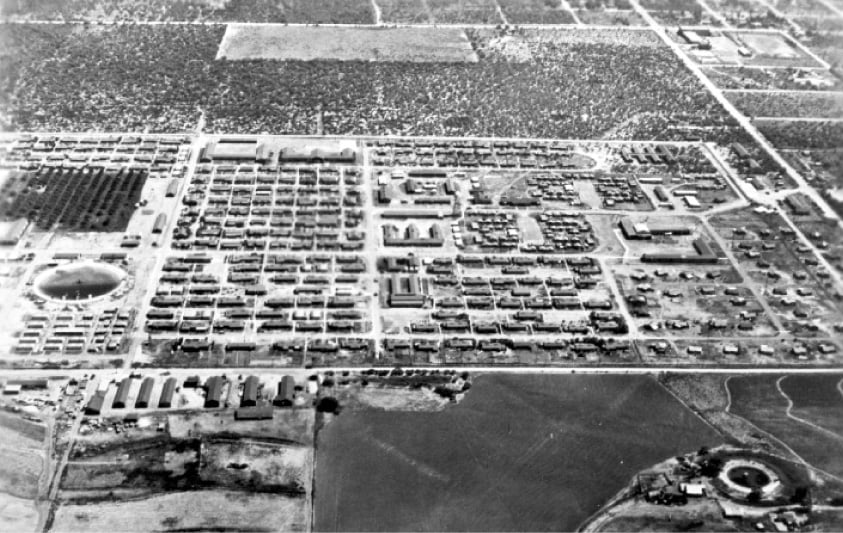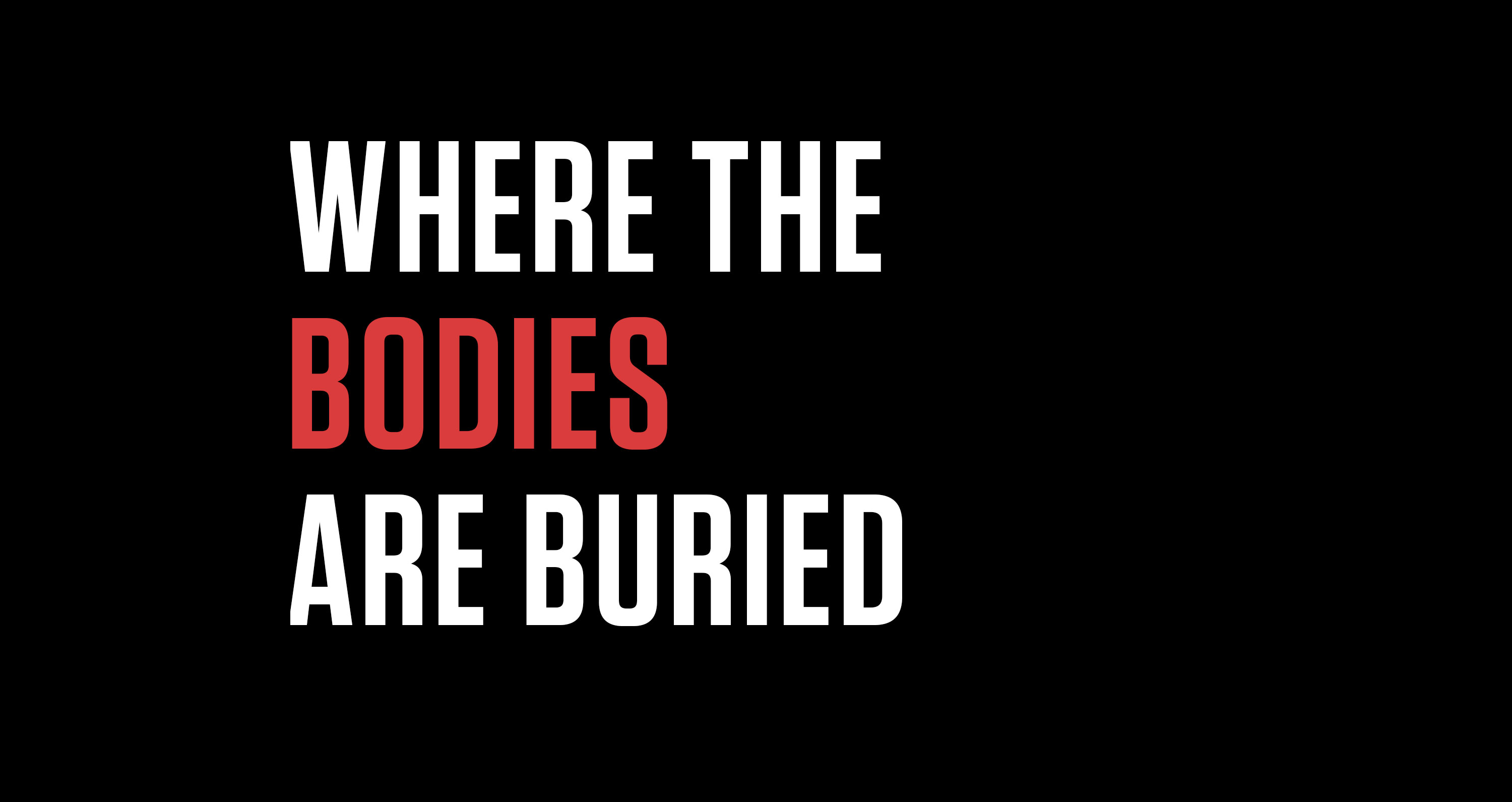

In 1910, East Texas saw one of America’s deadliest post-Reconstruction racial purges. One survivor’s descendants have waged an uphill battle for generations to unearth that violent past.
–
by Michael Barajas
July 15, 2019
A twisting, tree-lined road carried Constance Hollie-Jawaid and her family through the dense forest until they reached Slocum, a small unincorporated town dug into the Piney Woods of East Texas. A few miles southeast of the old high school, past two trickling creeks, the family pulled off the road near a small red farmhouse. A thick, leafy canopy shielded them from the cloudless midsummer heat as they exited their cars and began to quietly pace along the red fence.
It was July 29, 2018, a somber day for the Hollie family. Not far from where they stood, more than a century before, on July 29, 1910, white vigilantes attacked black communities surrounding Slocum. By most accounts, the violence lasted throughout the day and night as white men from across the region traveled to Slocum to join in the killing. Once the dust began to settle, the state’s major newspapers, including the Houston Chronicle, Dallas Morning News and Fort Worth Register, reported that white mobs had murdered as many as 50 black people during the massacre. The papers also described how victims were unceremoniously dumped into communal pits before the mobs scattered. Hollie-Jawaid believes some of the dead, including her ancestors, could be buried here beyond the fence line — and she intends to find their bodies.
“Piled upon one another in a mass grave, like dogs,” she said. “That is a history that needs to be acknowledged and remembered. For so long people denied that it even happened.”
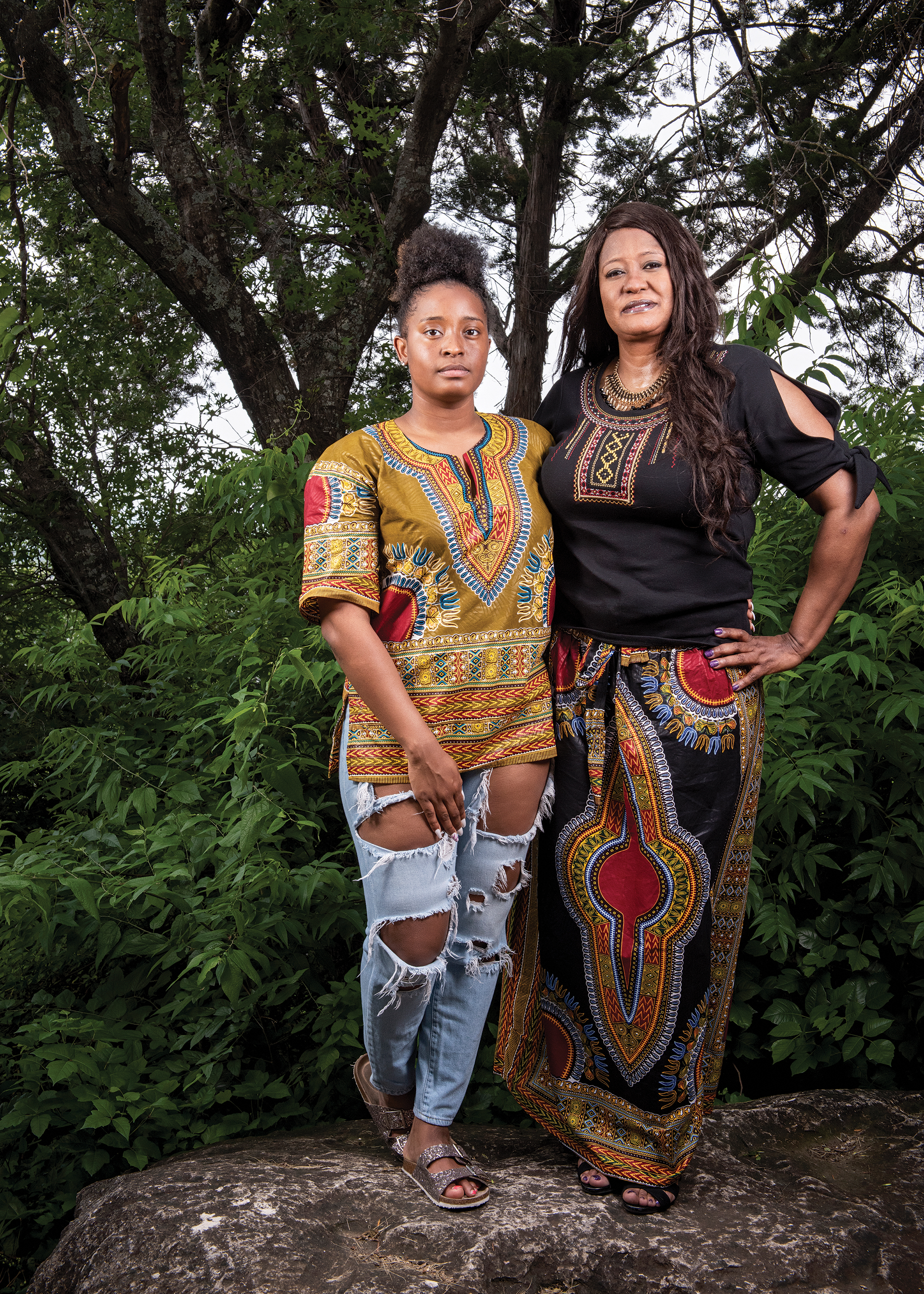
The massacre in Slocum shocked people from Abilene to New York, who read about the killings in newspaper coverage in the days that followed the spasm of violence. Texas’ governor at the time, Thomas Campbell, who’d grown up near Slocum, was reportedly appalled that vigilante violence still ruled his home county. Authorities called the episode an embarrassing stain on the state and region and vowed justice.
The outrage was short-lived. Within a year, the criminal prosecutions of seven white men indicted for the killings had fizzled. Less than three years after the slaughter, a fire ate through the local courthouse, destroying records from the case. The story had all but disappeared from East Texas history by the time Hollie-Jawaid was a teenager and started to dig deeper into her family’s history. Black people from the region were reluctant to talk about the violent past, she says, while many white people denied the massacre even happened.
Hollie-Jawaid and her family started visiting this quiet patch of forest off Anderson County Road 1208 after reading letters from the local historical commission archives that said the land might contain bodies. But they are constrained to exploring the fenceline, as the landowner refuses to let them onto the property.
The great-great-granddaughter of a man forced to flee racial violence after already having survived slavery, Hollie-Jawaid has spent the past several years struggling to unearth the region’s dark past, as did her grandfather, father and uncle before her. Her family’s fight to correct Slocum’s whitewashed history dovetails with the recent push across the United States to grapple with the country’s racist past and the legacy of inequality created by racial terror. While some cities reassess Confederate monuments erected during the civil rights era, others have begun to confront the kind of racial violence that shaped the South after Reconstruction. Officials in Tulsa, Oklahoma, recently created a committee to oversee a search for mass graves connected to a 1921 racial massacre that was swept under the rug for generations.
The resistance the Hollie family has faced in East Texas also underscores the profound hurdles facing those who push communities to confront past racial violence. Five years ago, when Hollie-Jawaid applied for a historical marker honoring Slocum’s victims, local leaders called the idea “inappropriate,” “dishonorable” and “blackmail by shame.” After officials failed to block the plaque, they carefully negotiated its language to avoid offending white residents, and acknowledged only eight victims.
Since then, Hollie-Jawaid has searched for Slocum’s lost graves, both so that descendants can honor the dead and to prove what really happened in 1910. The bodies, she says, could force an undeniable reckoning with the region’s past and give families like hers their history back. So far, local law enforcement, historical commission officials, county leaders and landowners have refused to help. In January, the landowner of the property that she believes contains bodies sent her an official “notice of forbidden entry.”
“If these were Confederate soldiers, they would be exhumed already, given proper burials and a museum would have been erected,” Hollie-Jawaid said. “They’re not interested in these bodies. These bodies only matter to us. Apparently their lives only mattered to people like us.”
–
Some of the earliest newspaper accounts called what happened in Slocum a “race riot.” Hollie-Jawaid cringes at that description. She learned at an early age just how one-sided the violence was.
Some accounts traced the troubles back to a white man fighting with a black man who owed him money; others told of a white farmer infuriated by a black foreman who asked him to work on a road crew. That such an explosion of violence could follow these minor squabbles points to the rancor many white people felt toward their black neighbors. On July 30, 1910, the Houston Chronicle questioned whether whites had launched “an attempt to exterminate the negroes” in the area. The Fort Worth Register characterized the violence as “a culmination of smoldering hate between races in a community thickly populated by blacks.”
The day the violence began, men flocked to Slocum “to witness the trouble and aid the whites” in such great numbers that a local judge ordered the county’s saloons and gun stores to close. Officials later said that as many as 300 men joined the mobs. Texas Rangers and state militia arrived the following day to impose martial law and restore order, even in the county seat of Palestine, nearly 20 miles northwest of where the killings took place. Newspapers describe most of the mobs as attacking black communities nestled along Sadler and Ioni creeks, on a strip of land a few miles outside of Slocum in far southeast Anderson County.
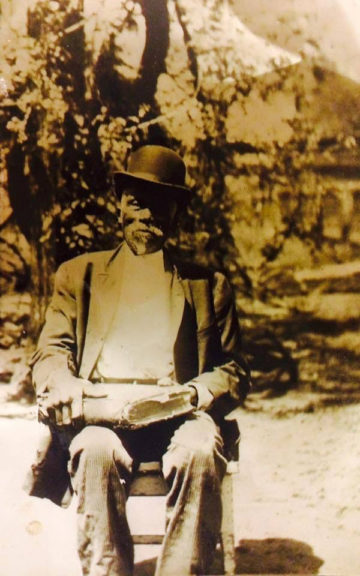
On August 1, 1910, Lusk Holley, one of Hollie-Jawaid’s distant uncles, told the Dallas Morning News that about 20 white men had attacked him and several others two days earlier. Lusk, who was 19 at the time, described his assailants traveling single-file through the woods, firing whenever a leader on horseback gave the signal. “When the first man saw us, he whistled.”
Hollie-Jawaid was born in Palestine, but her family moved to Dallas when she was young, after her father returned from the Vietnam War. A longtime educator, today she’s a principal at a Dallas-area school. She taught her daughter and son about Slocum “as soon as they could understand words.” She wants her students to someday learn about Slocum’s past in history books, to spur a more honest discussion about the real legacy of racial terror in East Texas. She’d learned her family’s history as a child visiting her grandparents in Palestine. They’d talk about Jack Holley, her great-great-grandfather, who had been born into slavery, was emancipated after the Civil War and eventually built the only general store in a black settlement outside Slocum.
Jack Holley belonged to a generation that escaped slavery only to face another historic wave of violence and oppression. The failed promise of Reconstruction in the South was soon followed by poll taxes and white only primaries, along with black codes that criminalized poverty and led to convict leasing, a new kind of prison-approved slavery. Meanwhile, gruesome and public acts of torture traumatized and isolated black communities across the state. Large crowds of Texans gathered to burn at least 31 black people at the stake between 1891 and 1922, averaging about one a year.
East Texas became, and in many ways has remained, a hot spot for racial tension and violence. Between 1877 and 1950, at least 22 people were lynched in Anderson County, the most of any Texas county and one of the highest numbers anywhere in the country. Jeffrey Littlejohn, a Sam Houston State University history professor who has researched lynchings in the region, says the killings in Slocum weren’t an aberration, but rather emblematic of the kind of white-on-black violence that shaped the region and the state. “Basically,” he said, “when I think of East Texas in 1910, I think of a place that’s at the nadir of American race relations.”
The outrage that followed the violence in Slocum was brief and inconsequential. Eleven white men were arrested and seven were indicted for murder, but the prosecution waned under a new governor and district attorney. On May 10, 1911, the Court of Criminal Appeals freed the five men who remained in jail. The court’s ruling included testimony from a local white man, a justice of the peace, blaming Slocum’s black community for its own destruction. Before the massacre, the man testified, black people had “become very insolent towards the white people, and would ride by the houses where the white women were with their hats cocked on the side of their heads, whistling.” Another witness testified, “The Negroes down there are not disbehaving [sic] now.” The criminal cases were forgotten.
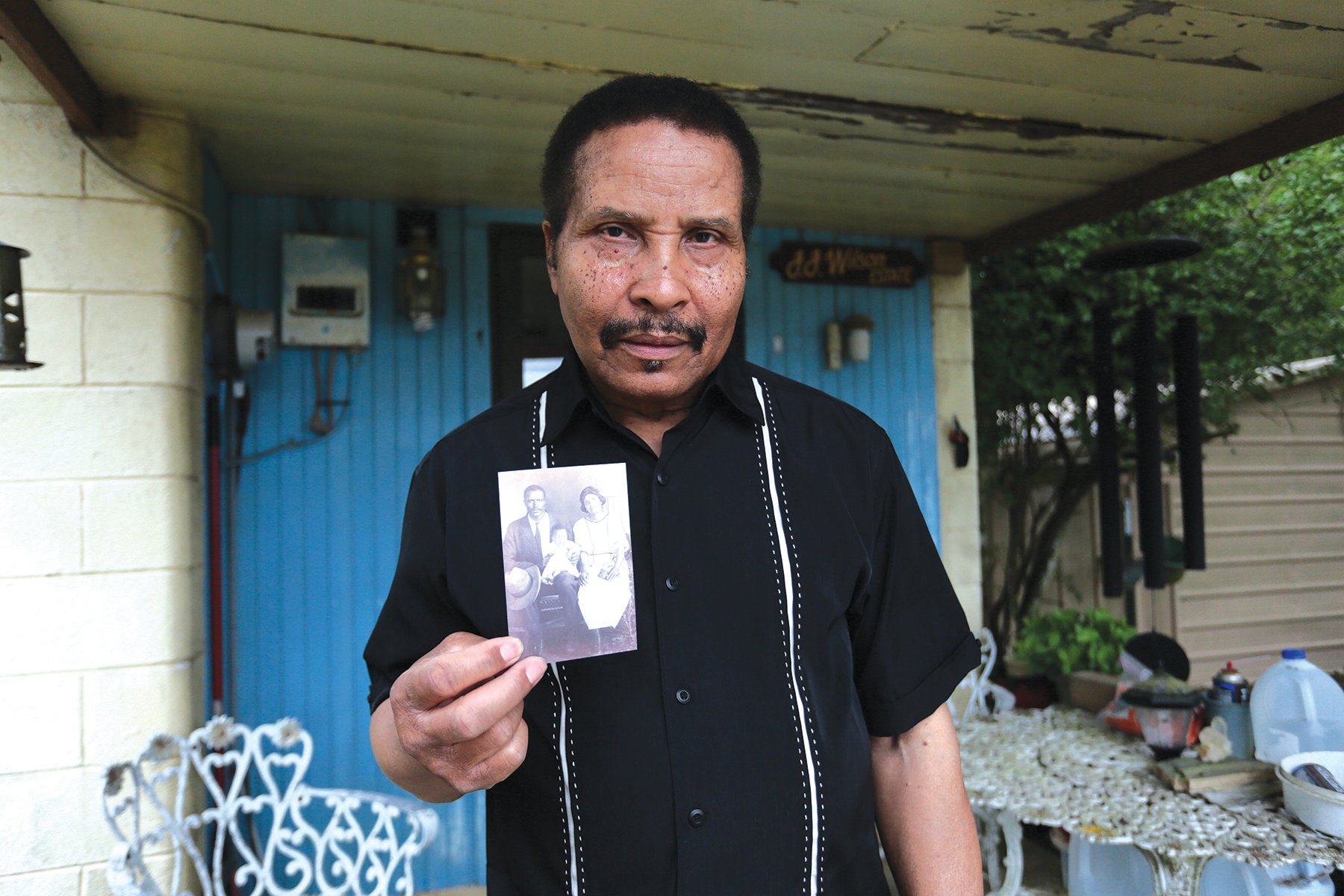
Winston Wilson grew up knowing that his grandfather, Richard Wilson, was one of the eight victims named in newspaper accounts of the massacre. Winston’s father, Justice Wilson, was 19 at the time of the killings and recalled fleeing in the dark on foot, spending hours inching through the countryside as he hid from men on horseback. “He didn’t like talking about it, you could see it on his face,” Winston said.
Audrey Wilson, another of Richard Wilson’s grandsons, learned a more graphic version of the story growing up. His father, George, was 8 at the time of the massacre. George recalled sitting in his father’s lap when the posse broke down the door. Audrey’s grandmother begged the men to spare the boy. “She got up and came and got my dad off his daddy’s knee,” Audrey said. “Then the man gave the command to fire. They shot him right there in his rocking chair, then went on to the next house.”
Many of the survivors escaped and never returned. After the massacre, Jack Holley fled to the small town of Oakwood, about 30 miles west of Slocum. The mobs had murdered his grandson, Alex, and nearly killed his sons Lusk and Marsh. The family settled in Oakwood, but only after changing their surname to Hollie.
When Hollie-Jawaid was young, learning about what the Hollies had endured and escaped made her proud. It was proof that she was descended from people who could survive anything. “I was the only black person in my class until I went to high school,” she said. “I remember it being an immense source of pride, these stories that my uncle, my father, my grandfather would tell me — just, like, ‘Wow, look at where we came from.’”
In the mid-1980s, Hollie-Jawaid’s father and uncle unsuccessfully pushed Anderson County to acknowledge the tragedy with a historical marker. In high school, she joined her dad on trips to the library to scour microfiche reels of old newspaper records, which for her underscored both the scope of the bloodshed and its absence from the larger recorded history of East Texas.
Hollie-Jawaid became disturbed by the reaction her family kept getting from Anderson County officials. “They would say, ‘It didn’t happen,’ or, ‘It was rumored to have happened, but there’s no evidence,’ or, ‘Yeah, maybe a couple guys got into a fight, but that’s it,’” she said. “They just really minimized it.”
–
While the mobs had concentrated on the communities southeast of Slocum, the killing also stretched across the county line into the small town of Percilla. Granville James Hayes was born there months after the massacre and grew up hearing stories about it from his father, a prominent white doctor from the region. In 1984, Hayes offered to donate land to Houston County for its upcoming sesquicentennial celebrations in exchange for officials hanging a plaque that finally acknowledged the bloodshed.
Hayes also urged officials to investigate the massacre. He claimed two men he grew up with, men he believed had participated in the killing, told him that they dumped victims in a mass grave near the Silver Creek School southeast of Slocum. He wrote that as a boy, he picked bullets out of an old log house near the school. He seemed to grow irritated after the county ignored his offer, writing in another letter six months later, “Maybe we of the white community are a little too ashamed.”
Officials denied Hayes’ request for a historical marker later that year, saying the only evidence of the massacre was hearsay. Meanwhile, Jerry Sadler, a native of the area who became a prominent state Democrat, dedicated sweeping passages of his 1984 memoir to what he called the Bad Saturday Massacre of 1910. Sadler wrote that he was not quite 3 years old when his family took in people fleeing the mobs around Slocum. “I did not fully understand all of what was happening, but I recognized fear in the faces of the black people who came to see my father that night,” he wrote. “I heard the terror in their excited but hushed voices as they told him what was happening.”
After her father died in 2010, Hollie-Jawaid took the lead on the family’s push to remember Slocum. In 2011, her family worked with a Fort Worth Star-Telegram reporter on a story about the forgotten history, which spurred a resolution at the Texas Legislature acknowledging the massacre. Three years later, E.R. Bills, a freelance journalist and author who writes about the state’s history of race-based violence, turned the newspaper stories, memoir passages, oral histories and other archival records into a book, titled The 1910 Slocum Massacre, that describes the episode as “an act of genocide in East Texas.”
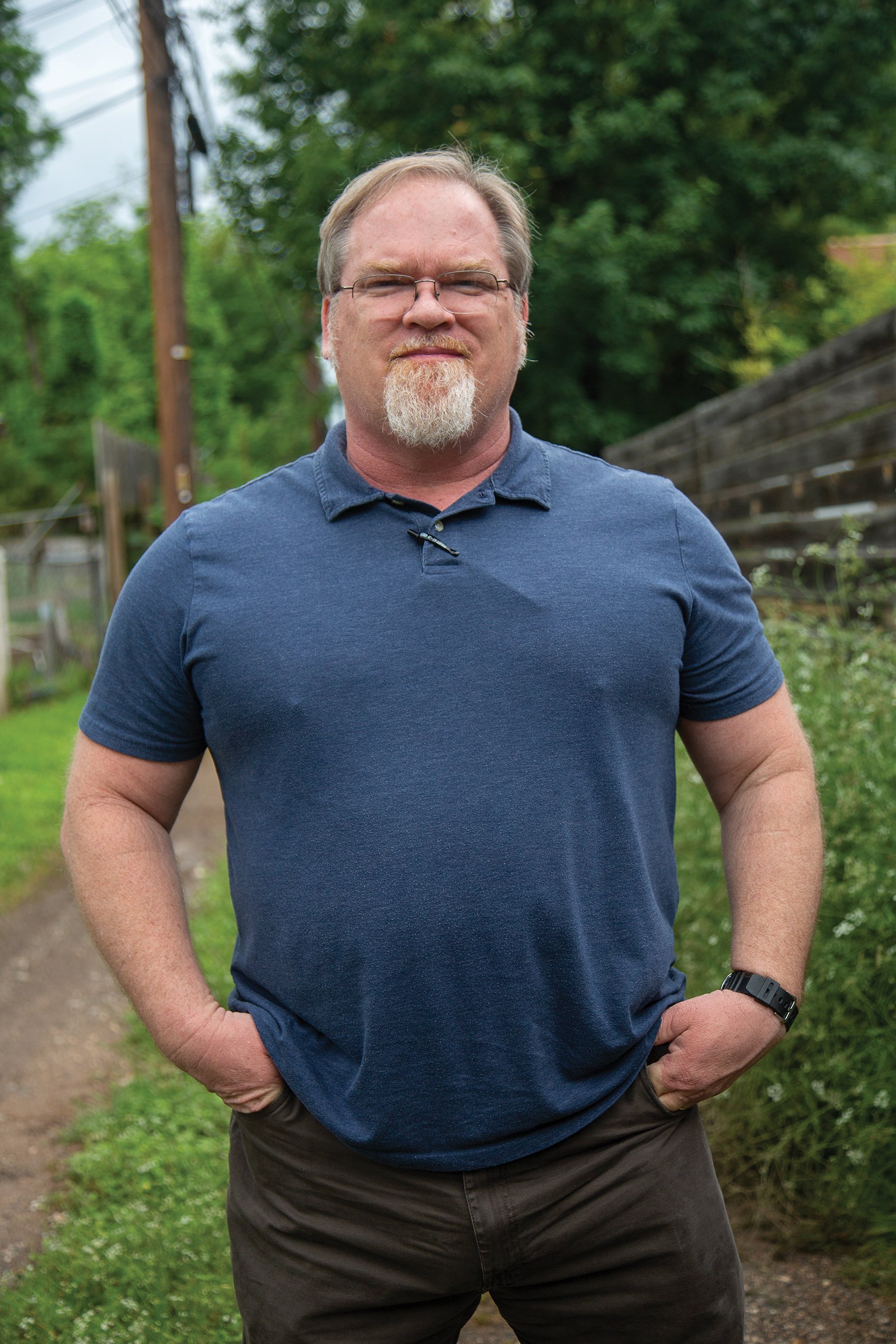
The book bolstered the case for a plaque. Bills agreed to help write and submit an application for a historical marker commemorating the victims, but talks with local officials soured almost as soon as they started. Bills claims that Jimmy Odom, chair of the Anderson County Historical Commission, demanded to know whether he worked for the NAACP. When Bills persisted, Odom told him the story of the massacre was overblown and at one point quipped, “Ain’t you a white man?”
Hollie-Jawaid’s phone call with Odom was even uglier. “He told me, ‘My colored people down here are happy. Why are you doing this to us?’” she said. “I was like, ‘Your colored people are happy? I didn’t know you still owned colored people.’” According to her, the conversation ended with Odom accusing her of trying to kick people off their land.
After that, Hollie-Jawaid and Bills sidestepped the county and filed their application for a plaque directly with the state. Odom submitted a four-page letter calling the story of the massacre as told in the application “dramatically overstated.” Odom also questioned the value of commemorating something so violent in such a visible way. “It may be that the descendants know they will always remember it, but may not want to see a daily reminder of it,” he wrote. “It would be a shame to mark them as a racist community from now until the end of time.”
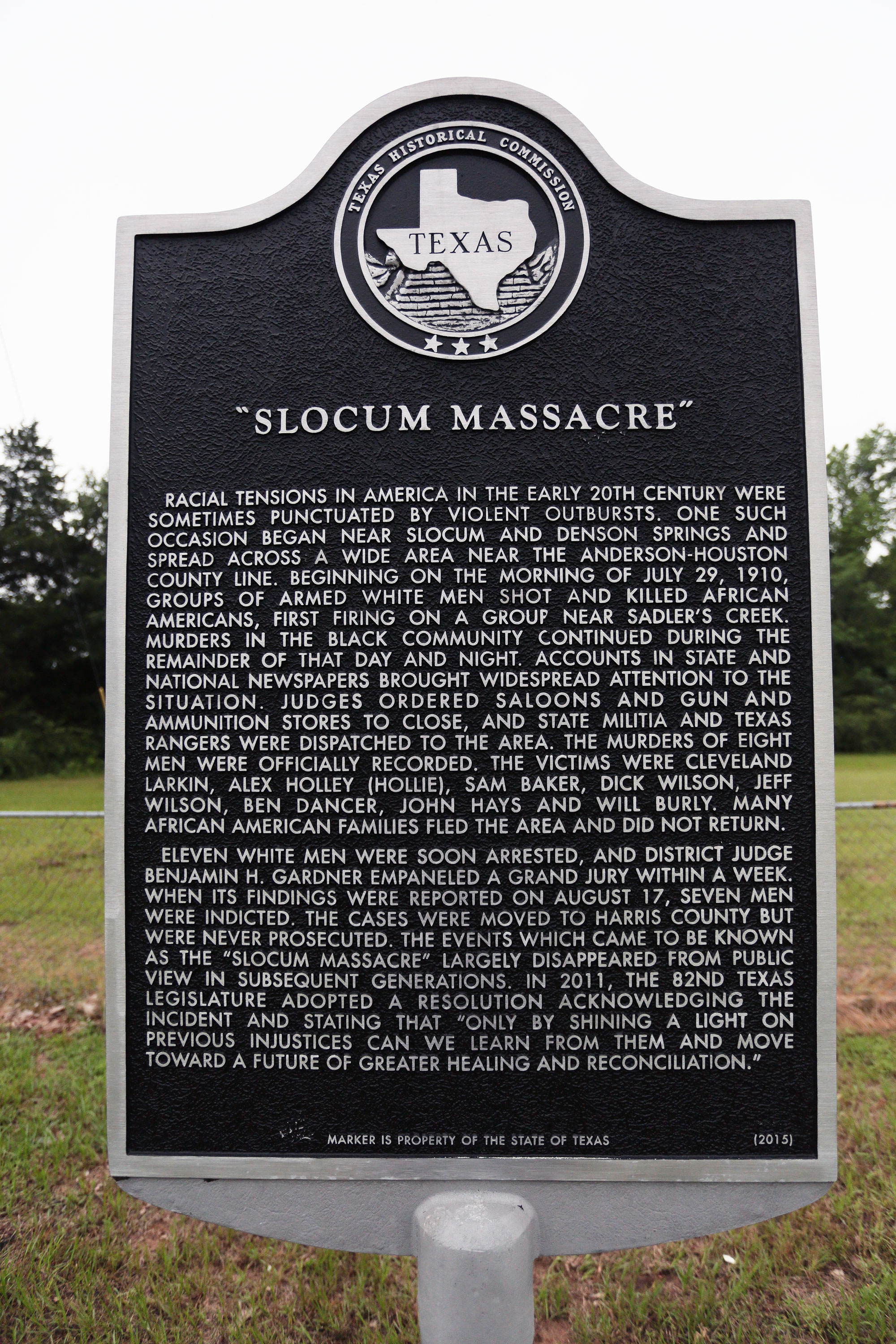
In January 2015, the Texas Historical Commission unanimously approved the Slocum marker, which acknowledges eight murders that were officially recorded but makes no mention of the dozens of other victims reported but never named. Odom, who is white, feels burned by the ordeal and insists he was unfairly painted as a racist. He says he resisted acknowledging the massacre because the history is unsettled. “We didn’t have no facts or anything other than what newspapers were saying,” he said. “And I don’t copy anything that the newspapers say.”
After the historical marker was finalized in 2015, Hollie-Jawaid and Bills felt like they’d forced officials to acknowledge only a sanitized version of the Slocum story. So they turned their attention to the bodies as a way to comprehend and memorialize the whole story. At a ceremony in Slocum dedicating the new marker, Bills zeroed in on the bodies. “They’re still ignominiously piled on top of one another in an anonymous underground pit,” he said. “For this I am ashamed, because it’s folks who look just like me who perpetrate this travesty.”
–
Hollie-Jawaid often felt anxious visiting Slocum to research the massacre. Several times, she says, white people warned her to leave before sunset. She says some black people refused to be seen with her out of fear of reprisal. Eventually, she got her concealed-carry license and started packing a gun for protection. After the marker was approved, she and Bills began approaching local landowners for help looking for lost graves. “The question that they all had was, ‘Are you going to take my land?’” she said. “That was their concern, being displaced.”
Rumors of hidden graves have hung in the air around Slocum for a century, but while working on his book, Bills uncovered a lead: He found Granville James Hayes’ 1984 letters to the Houston County Historical Commission, in which Hayes described perpetrators bragging about burying victims in a pit near the old Silver Creek School.
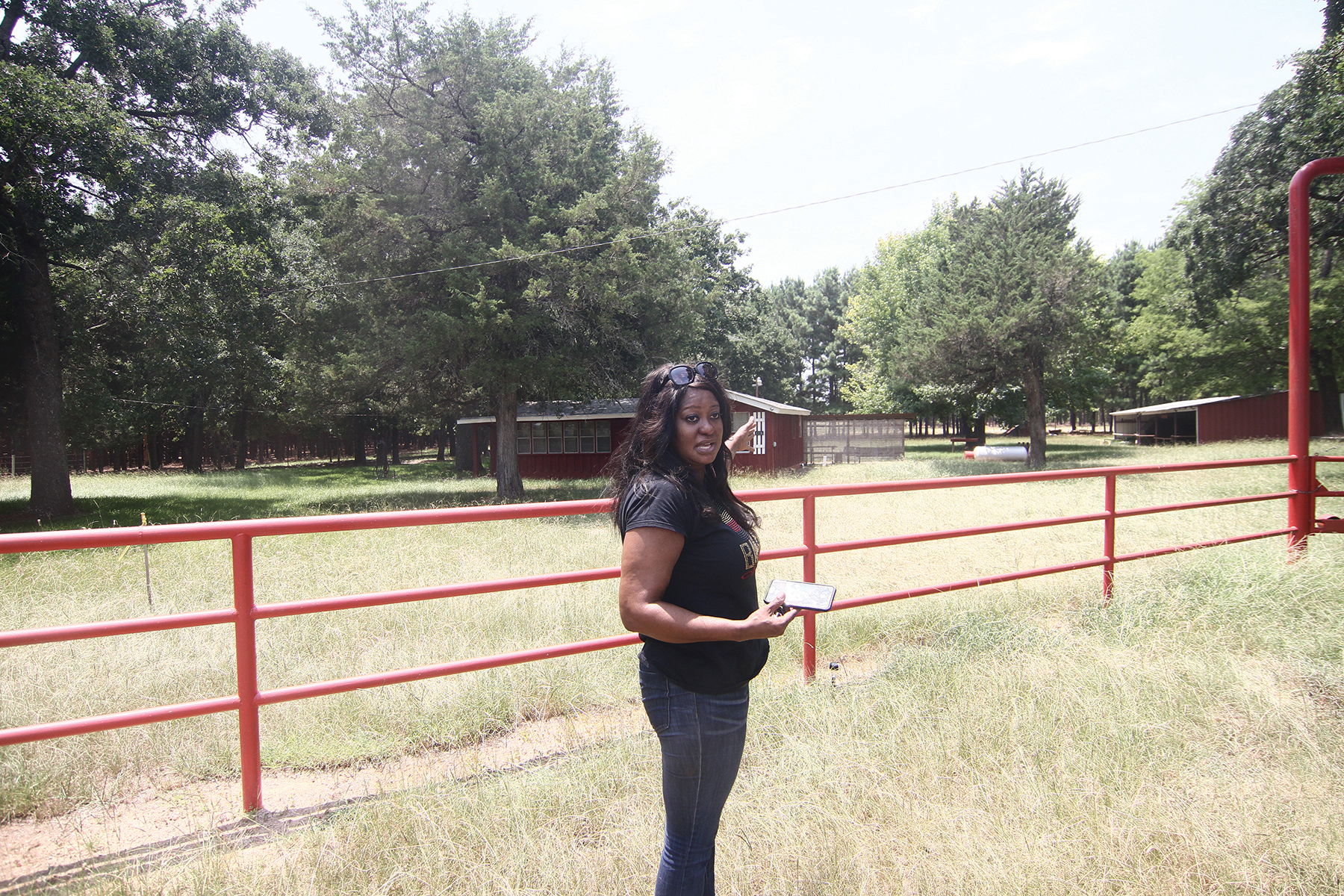
In March 2015, Hollie-Jawaid drove out to the area where the school once stood, hoping to find the landowner. She brought a letter to leave at the fence line asking for access to the property, but encountered a man mowing the grass when she got there. Hollie-Jawaid claims he identified himself as the property owner’s uncle and said that dozens of bodies were probably buried in the area. Later that week, she spoke to the landowner, James Burleson, on the phone. She says he was furious that she hadn’t identified herself to his uncle as a descendant of people who fled the massacre. “He said if they find remains there, they’d be kicked off their property. He said that wasn’t going to happen.”
In October 2017, Hollie-Jawaid returned to the property with several family members, including her son. This time Burleson was mowing the yard. When she asked him to let them survey the land, he again refused, telling her to pay her respects from the road. She broke down crying at the fence line.
Hollie-Jawaid has persisted. In January, she sent Burleson a letter asking to schedule a time to visit the property, citing state law allowing public access to cemeteries, even if they’re on private property. Burleson responded with his own letter. “In my 55 plus years of growing up in and around this area and now owning the family property, I have never heard anything about bodies being buried anywhere on the property,” he wrote, asking Hollie-Jawaid to “provide first hand testimony with the specific location of any burial or legal documentation for any reconsideration.” Burleson didn’t respond to my many letters, phone calls and emails.
Despite the roadblocks, Hollie-Jawaid sees some reasons to be hopeful. In the 1990s, pressure from survivors of a 1923 racial massacre in Rosewood, Florida, and their descendants led to publicly funded reparations for the victims and their families through direct payments and a scholarship fund. More recently, city leaders in Tulsa, Oklahoma, have formed a committee to search for mass graves ahead of the 100-year anniversary of a massacre that largely destroyed the city’s thriving black community, called “Black Wall Street” because it was so prosperous.
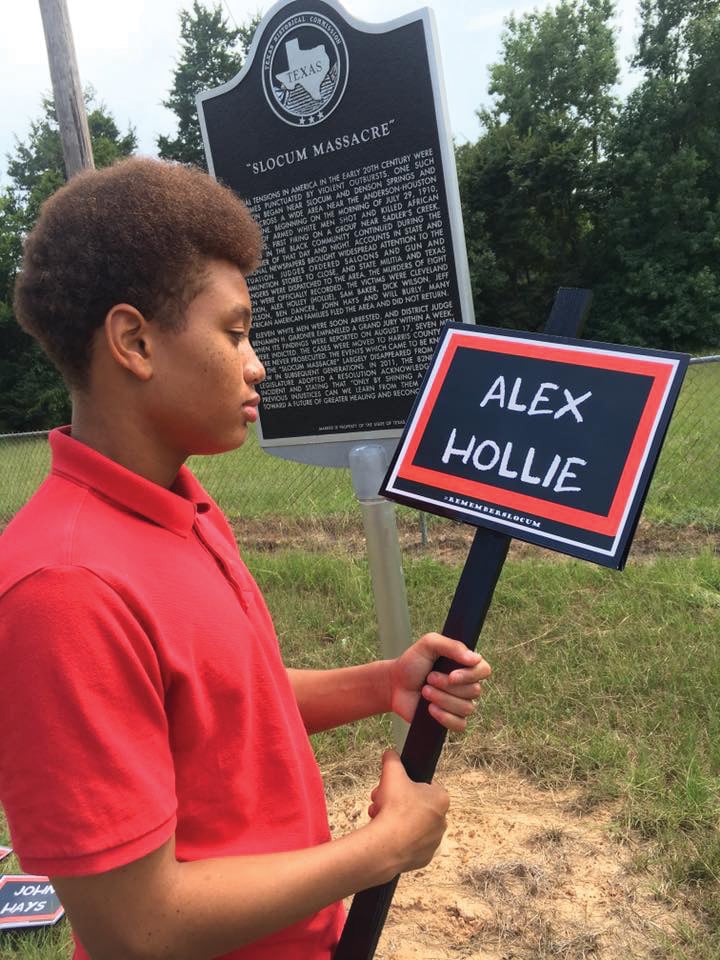
There are signs that attitudes in Texas could be shifting, too. Following the white supremacist violence in Charlottesville, Virginia, in 2017, officials in Texas removed more Confederate monuments and markers than any other state. That included a plaque installed in the Texas Capitol during the civil rights era perpetuating the lie that the Civil War wasn’t about slavery. A bill that would have made it harder to remove Confederate monuments also died at the Texas Legislature this year following a Senate hearing that drew emotional testimony from black lawmakers who opposed the measure.
Without the bodies, Hollie-Jawaid fears the truth of what really happened in Slocum will remain buried. Along with opposition from intractable landowners, well-meaning ambivalence might also contribute to keeping the victims and their story underground.
David Franklin, a white man who traces his roots in the area back to the 1830s, initially opposed the historical marker because he figured there was little evidence to support it. He says he was “pleasantly surprised” by the language on the plaque. Recently sworn in as the region’s constable, Franklin now patrols the precinct that covers the region around Slocum. He drove through the area on a recent overcast day, showing me where his family told him the killings happened. We took the road leading away from the old high school, barreling south past Sadler and Ioni creeks to the spot where the Silver Creek School once stood. We turned down a dusty country road, passing through land where Franklin says his ancestors lived.
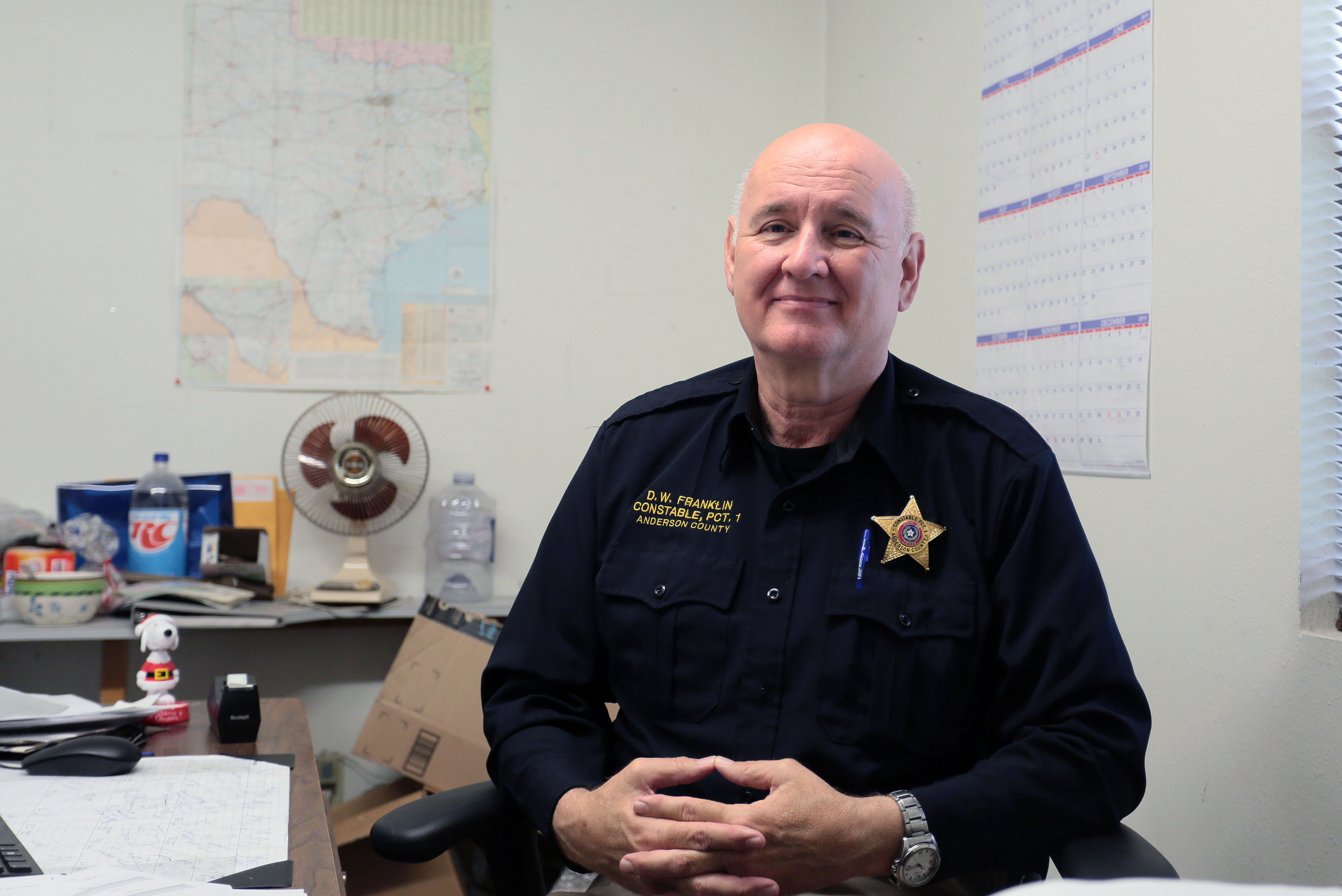
“I was always told that it happened in this area right here,” he said, driving past fields bounded by thick forest. Twice we passed the property Hollie-Jawaid keeps visiting. She could use help, I told him, especially from someone local.
Franklin paused to think. “It would kill me to think of my ancestors buried in an unmarked grave somewhere,” he said. “I’ve heard rumors for years where the bodies might be buried. But it’s always from people where there’s no way they could know that, except if they were told by somebody who was told by somebody and so on.”
–
Jack Holley, whose descendants call him “Papa Jack,” was buried in the Oakwood cemetery in 1934, but Hollie-Jawaid didn’t know his exact resting place until recently. In 2015, an anthropology professor at Stephen F. Austin State University helped her find the grave with a ground-penetrating radar machine that resembles a push mower. She hopes to someday take it to Slocum in search of more bodies. Hollie-Jawaid gave her great-great-grandfather a headstone engraved with the words “Remember Slocum,” which she visits on her annual pilgrimage to the area on the day of the massacre.
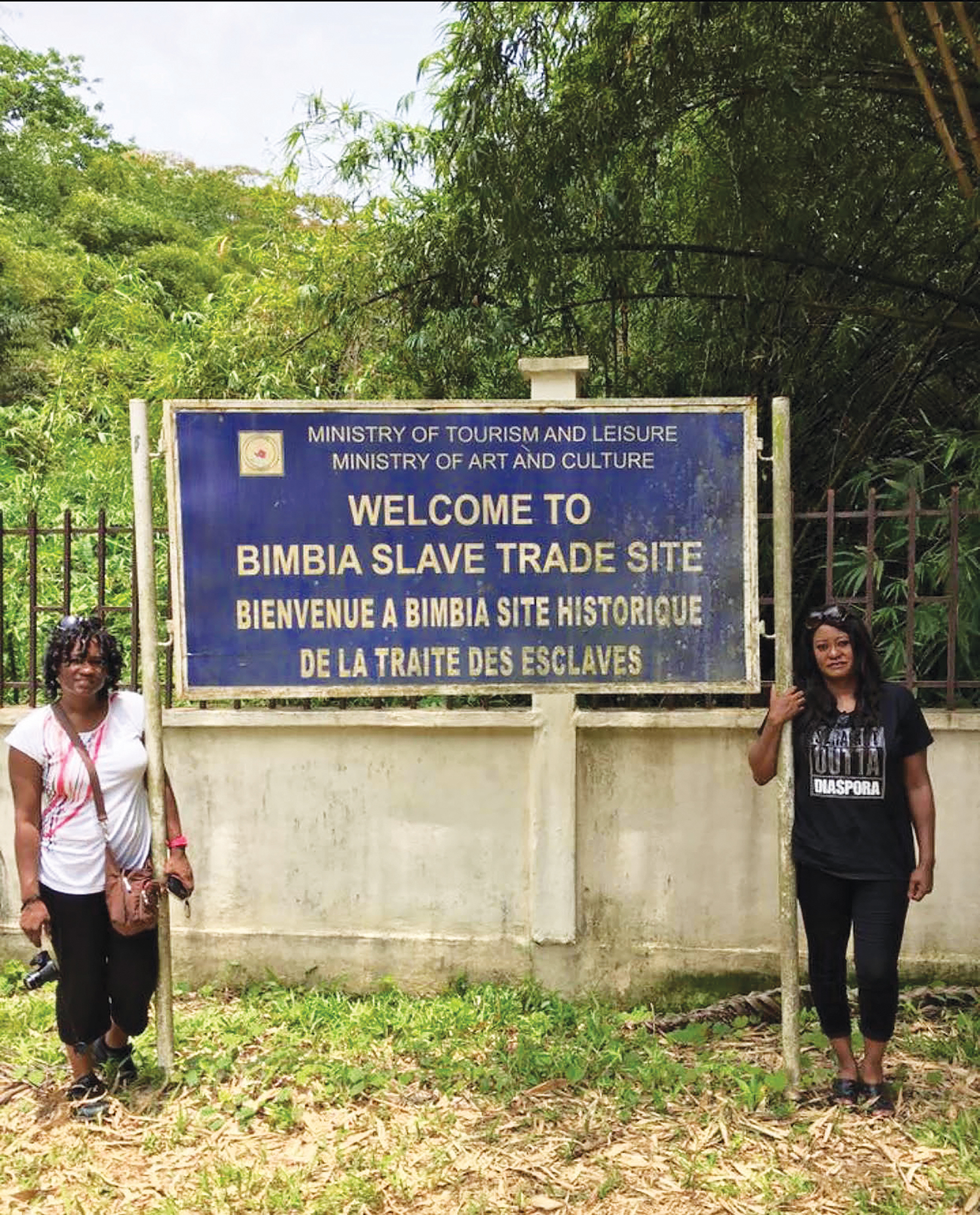
Last year’s anniversary was a special one. Hollie-Jawaid had recently returned from a trip to Africa tracing her father’s lineage to a village in Cameroon. “Papa Jack would talk to his children about his people being who they were in Africa, that they were not slaves, that they didn’t work for anybody,” she said. “I wanted to meet Papa Jack’s people and learn who we descended from.” Hollie-Jawaid carried a photo of her great-great-grandfather with her on the trip to show her distant relatives. They pinned it on a wall alongside other images of village heroes. They also gave her dirt and bone fragments from the village, she says, “to reunite Papa Jack with his ancestral home.”
Last summer, members of the Hollie family took turns sprinkling the dirt and bone into a small hole they’d dug near Jack Holley’s headstone in the Oakwood cemetery. When they arrived in Slocum, the family stopped at the historical marker commemorating the massacre, dropping more bits of dirt and bone next to the plaque. Then they drove another three miles down a narrow country road until they reached the farmhouse near the old Silver Creek School site. Constance sprinkled more dirt and bone along the fence line. She plans to return this year.
